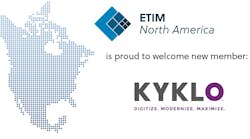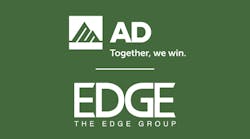As a manufacturers' rep for Arlington Industries, which introduces a new product about every 60 days, Don Degnan, president, Walker-Loudermilk Co., Kansas City, Mo., has had lots of experience using product launches as selling tools.
Arlington Industries, Scranton, Pa., may very well be the king of new product rollouts in the electrical industry. Constantly on the lookout for ways to save electrical contractors time and labor, Arlington Industries stays in close contact with its customers, going on sales calls with their reps, attending trade shows and always asking electrical contractors how products could be improved or what new gizmo they need.
Degnan says Arlington Industries does a great job communicating about new product launches with reps. The manufacturer provides product samples and literature well in advance of the actual product launch.
“When a new product is introduced, we usually have at least 30 days — if not 60 days — advance notice so we can go out and show the product to our distributors and their customers,” said Degnan.
But, as much as manufacturers put into research and development, as diligent as a manufacturer is in uncovering product characteristics that meet customers' needs, no matter how great a manufacturer's product literature, the distributor makes or breaks a new product introduction, according to industry consultant Jim Nowakowski, president of Accountability Information Management Inc., Palatine, Ill.
More than the manufacturer or rep, electrical distributors control customer interaction and the ultimate sale. Consequently, more than anyone else, the distributor must develop a strategy to introduce new products that transcends what the manufacturer will do. Without this strategy, the manufacturer's work around the introduction can never be as effective as it could be.
Degnan agrees that new products don't just sell themselves. “The item is not going to be sold unless you're willing to take the time to go out and demonstrate the item and show the advantages of what the product will do,” said Degnan.
“If a new product is introduced and the distributor doesn't go out and promote the product or show the product, then his competitor — another distributor in town who is willing to take the time — will probably have an opportunity to sell the product.”
By working with the manufacturer's representative and manufacturer, an electrical distributor can set itself apart when it comes to new product launches.
-
Meet with the manufacturer's representative and invite him or her to conduct a training session at your facility. Select two or three individuals (depending on the return you expect from that product) to be trained. Key questions include: Why was this product developed? What type of regional sales expectations does the manufacturer have for your distributorship? What kinds of applications fit this product? Don't forget to ask about the tools available to bring this product to market. Get those promotional tools in your branches.
-
Look for immediate cross-sell opportunities. You want to bring attention to the product in ways that go beyond the product itself and enhance it in your customers' eyes.
-
Announce the product to your customers. Depending on the product and the sales tools provided, decide how you will promote and advertise the new product to your customer base. The minimum is an announcement sent to your customer file in the form of a direct mailer or an e-mail. Often, manufacturers already have these prepared for your use; you simply must ask for them.
-
Mail or e-mail the announcement again. Mailing the same piece to the same list will produce extra results. Do you notice when the same thing was mailed to you twice? Of course you do!
-
Track every customer who purchases the new product, and follow up with them a month or two after the purchase. Ask what they liked or didn't like about the product. Did the bundle add or detract from the product?
-
Review the customers who purchased the product and find the common denominator. Perhaps the thread is that the products were all used at schools. Perhaps renovation work was the common denominator, or maybe the tie is the golf courses where the product was installed. Whatever the common thread, find it and use it.
10 Dos and Don'ts for Selling New Products
-
Do use new product rollouts to open doors. Introducing a new product to a customer is an opportunity to establish yourself as an authority on the very latest developments in the electrical world, something you should never pass up. Salespeople are the first source of product information most customers look to, and if you can't tell them what's different and better about your products, they will buy from someone who can.
-
Don't miss product training when a manufacturer rolls out a new product. You need the product information; even more important, you need to be listening for information about the target market.
-
Do narrow your list of target customers to those who will be the most interested in the product. Some products will be more applicable to a commercial or industrial account versus a contractor. If you've developed a strong relationship with your customers, it may be immediately obvious who would be interested in the benefits of the new product. Good salespeople, those who really know how their customers think and where they are experiencing problems, can use new products to reinforce the impression that they're always on the alert for new ways to make customers' lives easier.
-
Don't blanket the territory showing the product to everyone. It can be a big waste of time.
-
Do think about whom in the customer's operation would be most receptive to it. Who gets the benefit? For example, if it's a product that makes installations easier or helps the installer save time, show it first to the installer rather than the purchasing agent. The installer then can push the procurement process by requesting it through his purchasing people.
-
Don't be tempted to rush out and show a new product to customers who already buy a lot of similar products. If the new product is basically an upgraded or improved version of a product you already sell, the customer who's already satisfied with the explosion-proof conduit fittings you've been supplying might or might not be interested in a new introduction that offers a few enhancements. If they do make the change, you're basically just replacing sales of the old products with the new ones. Customers who use a lot of explosion-proof fittings but aren't buying them from you, however, might be persuaded by the new features to give you that business, which means new sales where you had none before. At the very least, the rollout is an opportunity to get in front of that customer and start a conversation.
-
Do leave something behind to remind the customer of the product and your services. Make use of all the materials the manufacturer provided you as part of the product rollout.
-
Do bring samples and do live demos. If a product sample is too large or expensive to leave behind, leave a brochure describing the product.
-
Do offer a trial installation to a customer that has the potential to buy the product in substantial quantity. It's sometimes possible to overcome customer hesitation this way.
-
Don't panic if a customer asked you about a new product rollout, and you're clueless. Despite manufacturers' best efforts to get the word out to distributors, there will still be times when a customer sees an advertisement in a trade magazine or hears through the grapevine about a new product you've never heard of from your manufacturers. Admit you hadn't heard of the new product, or that you don't have much information on it yet, and promise to get literature and answers for the customer immediately.








